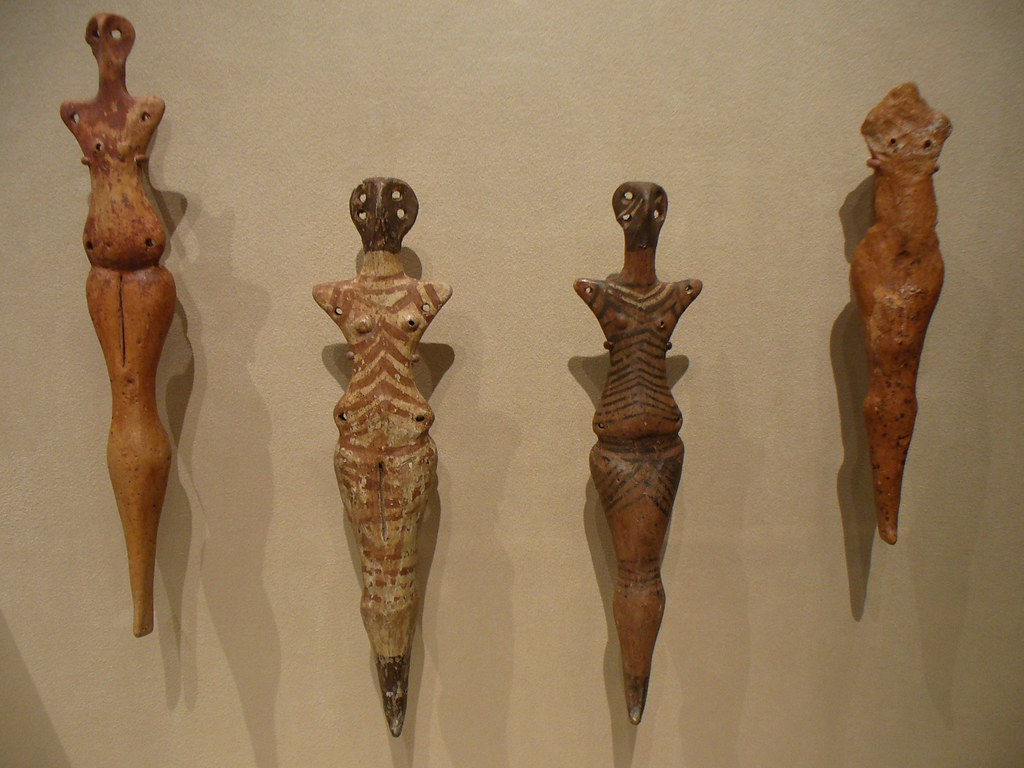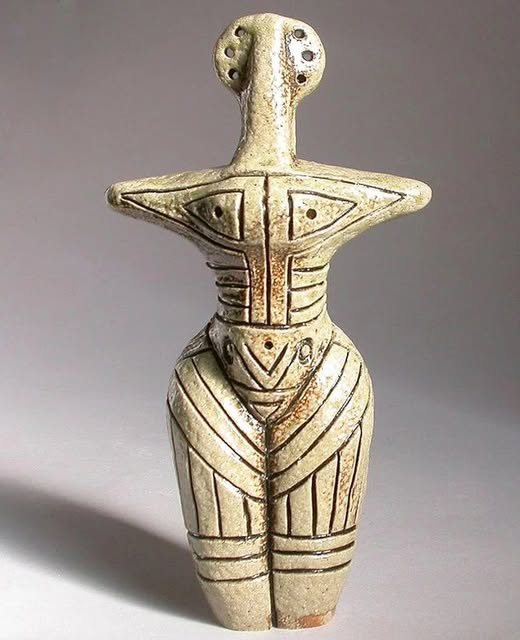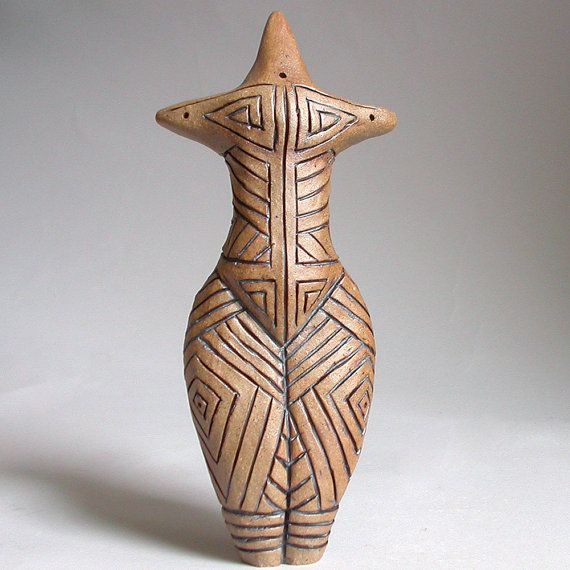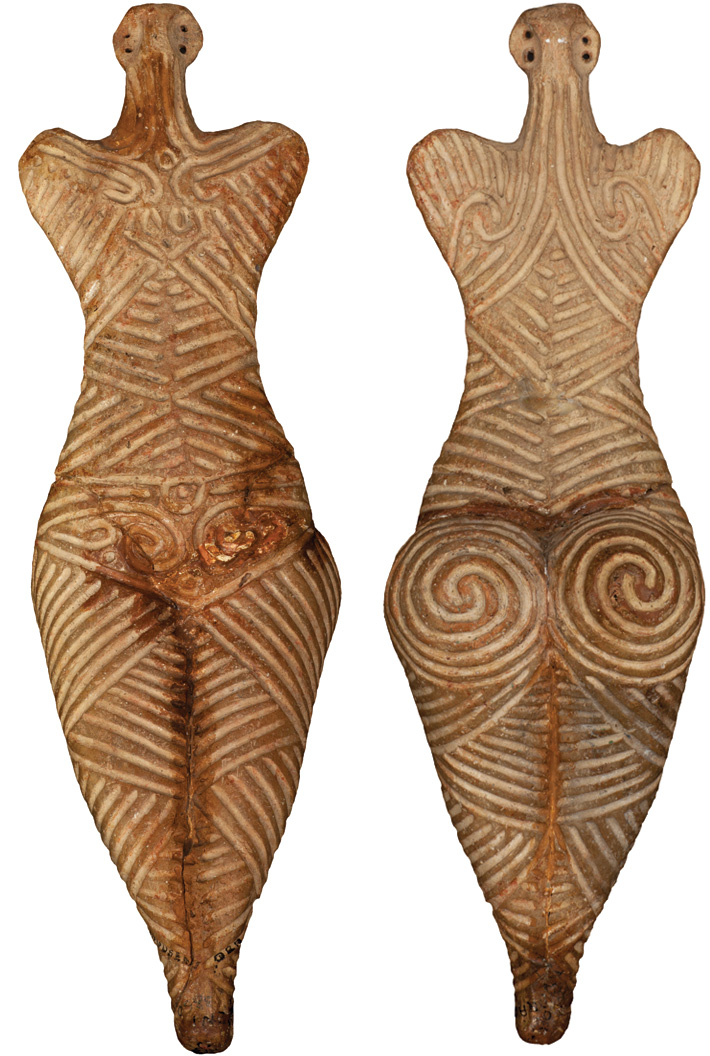Figurine from the Cucuteni–Trypillia Culture

This figurine from the Cucuteni–Trypillia culture, dating to around 3200–2700 BCE, is a remarkable example of Neolithic art from Eastern Europe, specifically the regions of present-day Romania, Moldova, and Ukraine. The culture is well known for its elaborately decorated ceramics and anthropomorphic figures, which often represent fertility goddesses or female deities symbolizing life, fertility, and continuity.

The figurine is characterized by its stylized geometric patterns incised on the surface, emphasizing the torso, hips, and breasts—key symbols of womanhood and creation.

The triangular and spiral motifs are typical of Cucuteni–Trypillia artistic expression, possibly reflecting a spiritual connection between humans and nature. The abstraction of form, with extended arms and a column-like body, reveals both aesthetic sophistication and ritual significance.

Such figurines were likely used in domestic or religious contexts, serving as protective idols or symbols of fertility and abundance. They stand as powerful testimonies to the artistic and spiritual life of one of Europe’s most advanced Neolithic cultures.












